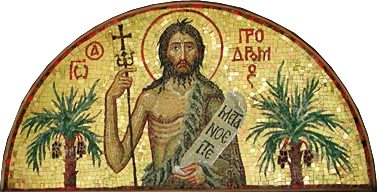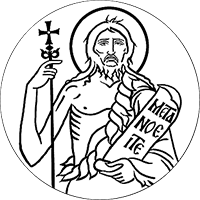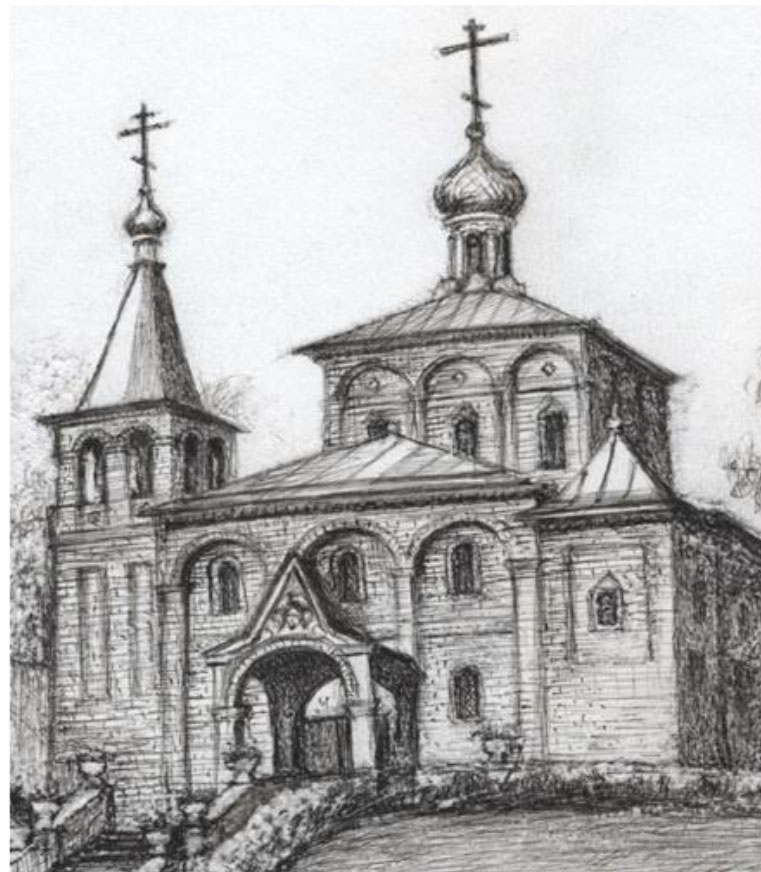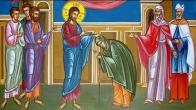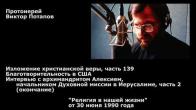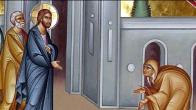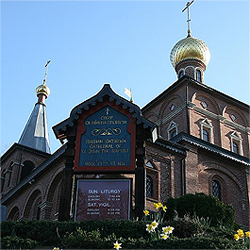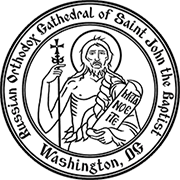You are here
Notes on the Liturgy and the Church.
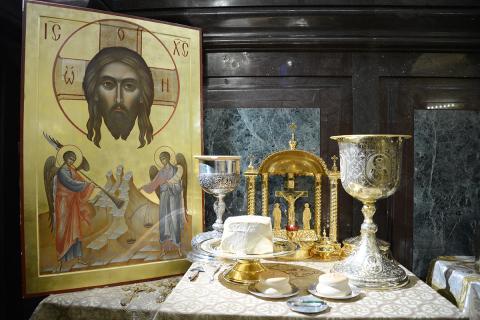
S.I.Fudel
Chapter 5
"In everything…visible [in the Church]," writes Makary the Great, "imagine to yourself the images and shadows of the hidden: in the visible temple [church building] - the image of the temple of the heart."
Each church is the image and likeness of the Church of Christ. Its walls are barriers guarding both God's holy site and the people serving therein, from the world of evil. The Lord says [through His Apostle} "Come out from among them, and be ye separate… For... what part hath he that believeth with an infidel?" (II Corinthians 6: 17; 6: 15). The world's evil lies in people's sins and passions, and man rushes toward the ship of the Church as to a safe harbor.
Churches were built in the form of a ship, or sometimes in the form of a circle, indicating that that the Church is forever. Sometimes they were built in the form of the Cross, as the Cross is [the Church's] foundation. Of course, there was a time when neither such buildings nor the clerical vestments we see during services existed in the Church. Moreover, of course, should the need arise, one can also perform Divine Services someplace other than a church - e.g. in a home. The martyrs served the Liturgy in prisons, and without vestments. But to Christian love it is frightening to think of serving Divine Services in the same clothing in which, and in the same place where, their sinful life goes on. Love also encompasses a pious fear of offending one's Beloved. If that fear lives in the heart, it will teach respect both for the order of service, and for freedom within ritual. "The Spirit breathes where it will," - both in obedience to the rubric and in freedom from it.
Suppose we are standing in the church before the beginning of the Liturgy. The quiet gathers up our thoughts and feelings - which had been scattered in the hubbub and passions [of our daily life]. Already the vigil lamps and candles throughout [the church] are burning, reminding us of the never-setting light of Jesus Christ: "And the light shineth in darkness; and the darkness comprehended it not. (John 1: 5) The silence makes it seem to us that the service has not yet begun, but in that we are certainly mistaken. Usually, the first part of the Liturgy is performed in hushed tones in the Altar. It is called the Proskomedia. This is a preparation for and an inseparable part of the Mystery about to be performed. In the Mystery, five loaves, known as Prosphora, i.e. offerings, are used. Each of the Prosphoras consists of two parts, in token of the fact that Christ is at the same time both God and man. Often, the upper part bears a depiction of the Cross and the initial letters of the name Jesus Christ, and the word Nika, which in Greek means "conquers." The priest takes one of the five Prosphoras and cuts from it a cube-shaped piece, while saying the words "In remembrance of our Lord and God and Savior Jesus Christ." As he pronounces those words thrice, let us come closer to the Altar in order to delve with our minds and hearts into the mystical commemoration of the work of Christ on earth.
In the Liturgy, "remembrance" is not a simple, human remembrance, but a Divine and ineffable one. "Do this in remembrance of Me," said the Lord regarding this Mystery. We sense that here, in this commemoration, the past becomes the present, that Christ's sacrifice for the world is once again, bloodlessly, about to happen. How well the Lord put it, "Liturgy is eternal repetition of the great spiritual feat of love." "Liturgy is Golgotha continuing in the Mystery." (Priest V. Sventsitsky) In the Liturgy, times are specifically mingled, and the promise that "there should be time no longer," (Revelation 10:6) is specifically fulfilled. Speaking of the liturgical "Prayer of Commemoration," (the anamnesis) Archimandrite Cyprian wrote that "for the earliest Christians, (It - S. F.) was substance, reality, something mystically appreciable, and not at all merely a remembrance as we understand the term." Once again we hear from the Altar the words "He was led as a sheep to the slaughter, and as a blameless lamb before his shearer is dumb, so He openeth not His mouth... In His lowliness His judgment was taken away. And who shall declare His generation? For His life is taken away from the earth."
Christ's "life is taken away from the earth,
for "God so loved the world that he gave His Only-begotten Son" (John 3: 16) so that the world might be saved through Him. Through Christ's death comes life for humankind. He Himself bore our sins in His own body on the tree (the Cross - S.F.) 'so that we, being dead to sins, should live in righteousness: by whose stripes ye are healed." (I Peter 2: 24).
The priest slowly pronounces the holy words (taken from the Book of the Prophet Isaiah, chapter 53), and we once again hear 'sacrificed is the Lamb of God, that taketh away the sin of the world, for the life and salvation of the world. These words in essence are endlessly repeated in various ancient Christian Liturgies, in the works of the Fathers, and in prayers.
"Thou, O Lord didst combine Thy Divine with our human and our human with Thy Divine, Thy life with our mortality, and our mortality with Thy life. Thou didst receive what was ours and granted Thine to us." (Syrian Liturgy of St. James). But God not only became man, but also became man Crucified; God became the sacrificial Lamb. That is why St. Cyprian of Carthage wrote about the Liturgy: "At any sacrifice, we remember the Lord's passion, for the sacrifice we bring is His suffering." All of the transfiguration of man and the world is for one single reason: the suffering and death of Christ. This is why the Apostle Paul, speaking of the Liturgy, writes, "For as often as ye eat this bread, and drink this cup, ye do shew the Lord's death till he come." (I Corinthians 11: 26). As we chant [on Great Saturday], in the Lenten hymn that replaces the Cherubic Hymn at the Liturgy, "For the King of kings and Lord of lords draweth nigh to be sacrificed and given as food to the faithful." "He draweth nigh (now - S.F.) To be sacrificed..." Thus in the prayer before Communion "Ever sacrificed" Or as in the ancient Syrian Liturgy of St. James "The Heavenly powers stand together with us in the sanctuary and perform the service at the Body of the Son of God, sacrificed in our presence." Archimandrite Cyprian writes that in the remembrance "of Christ's Passion the very action of the Lord's Passion takes place."
This happened at some time in the world, once, not to be repeated, "in the place known as Golgotha," but it happens again and again - and now in church - bloodless in appearance but ineffably real, so that until the end of its history, humanity lives and acts by this alone: by Christ's death and Resurrection, only by this sacrificial spirit of the Liturgy.
And it is only so that we might yet more clearly sense the full Divine reality of what is transpiring, the priest says, "One of the soldiers with a spear pierced His side, and forthwith came there out blood and water."
Holy Hierarch St. Dimitry of Rostov writes, "Pierced through are the ribs of the One Who from a rib fashioned Eve. That Heavenly Bridegroom now creates out of His rib His beloved bride, His Holy Church, redeemed by His blood." In one of the prayers is sung "God suffers in the flesh."
On the Cross was not an apparition of, but the actual, true, human body of God, and it was thanks to the fact that it was truly human that the Church and the Liturgy became possible. "For blood can come forth," writes St. Irenaeus of Lyon, "only from veins and body and all the rest that comprises man's substance, which the Word of God truly became, and [He] redeemed us through His blood." The entire conception and design of the Church is in the unity of love. Hence in establishing It, Christ prayed, "That they all may be one; as Thou, Father. art in Me and I in Thee, that they also may be one in Us." (John 17: 21). And at the Proskomedia, the priest's liturgical actions express images of that unity of the Church and God. First of all, he mixes wine and water in the Chalice. St. Cyprian of Carthage writes, "The mixing of wine and water in the Chalice demonstrates the union of the people and Christ, the believers with the One in Whom they believe. After being mixed in the Chalice, the water and wine are so indissolubly united that… they cannot be separated…likewise nothing can separate from Christ, the Church, i.e. the people who make up the Church."
In token of the unity of the Church, or its conciliarity, the priest performs another liturgical action. He removes particles from four separate Prosphoras in the name of all those who are part of the Church - the Church Triumphant in Heaven and the Church Militant on earth; he then arranges them around the Lamb on the Diskos. The Diskos is a small metal dish on a supporting stand. From the second Prosphora he takes a particle "in honor and remembrance of our most blessed Lady, the Theotokos and Ever-Virgin Mary, through whose intercessions do Thou, O Lord, receive this sacrifice upon Thy most heavenly altar."
"Praying to the Theotokos, to the Angels and the Saints, we recognize them as being one mystical body of the Church - to which we belong as well... Praying for the repose of those who have fallen asleep… we consider them to be of one body with us… There is the fruit of the Christian Faith: a union of love with everyone… For everyone is one body, one spirit, one Church, the Church of angels and people." (Archpriest John of Kronstadt)
"Eucharist is conciliar unity of its communicants." (Archimandrite Cyprian).
The priest places the particle for the Theotokos to the right of the Holy Bread, i.e. the Lamb already on the Diskos, with the words, "At Thy right hand stood the queen, arrayed in a vesture of inwoven gold, adorned in varied colors." In commenting on those words from the Psalm, Basil the Great writes, "The Prophet is speaking about the Church." "These words," writes St. Symeon the New Theologian, "refer to the Most-holy Theotokos, but also apply to the Church of Her Son and God... The Church is the Body of Christ, and the Bride of Christ, and the world above, and the Church of God… it is necessary for all informed by God to also be filled up with what is beyond this world, the world of the Church of first-born, the heavenly Jerusalem; then the fullness of the Body of Christ will be accomplished, encompassing within itself all of those foreordained by God to be of one likeness to the image of His Son… Then... the body of the queen of God's Church… will appear in its fullness and perfection."
"The Lord's flesh," writes the same saint - "is the flesh of the Theotokos." In the consciousness of the Saints, the Church and the Ever-virgin Mary merge into an incarnate unity of creation, the Temple of God, the "Conciliar Being."
PARISH LIFE
RECENT VIDEOS
Address of our Cathedral
Subscribe to our mailing list
While all the materials on this site are copyrighted, you may use them freely as long as you treat them
with respect and provide attribution on the Russian Orthodox Cathedral of St.John the Baptist of Washington DC.
